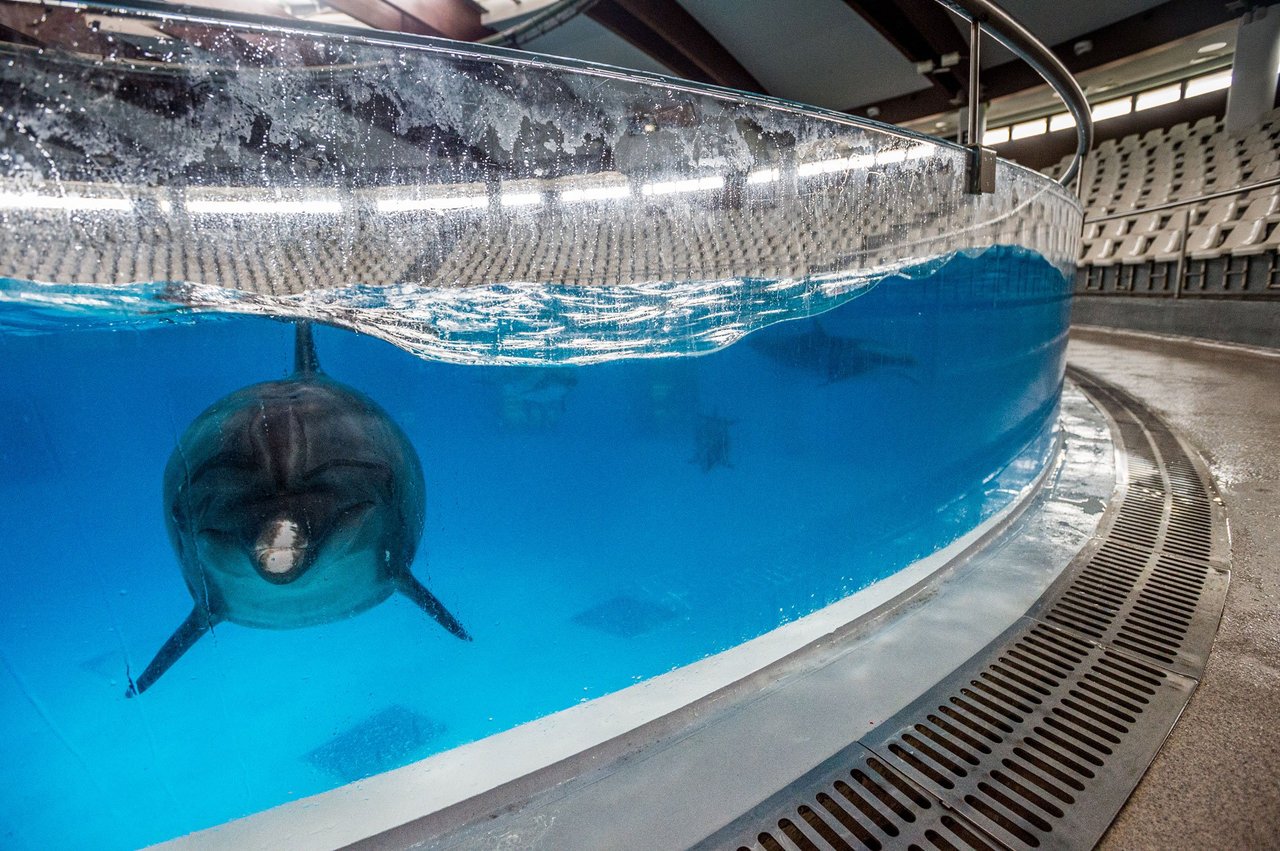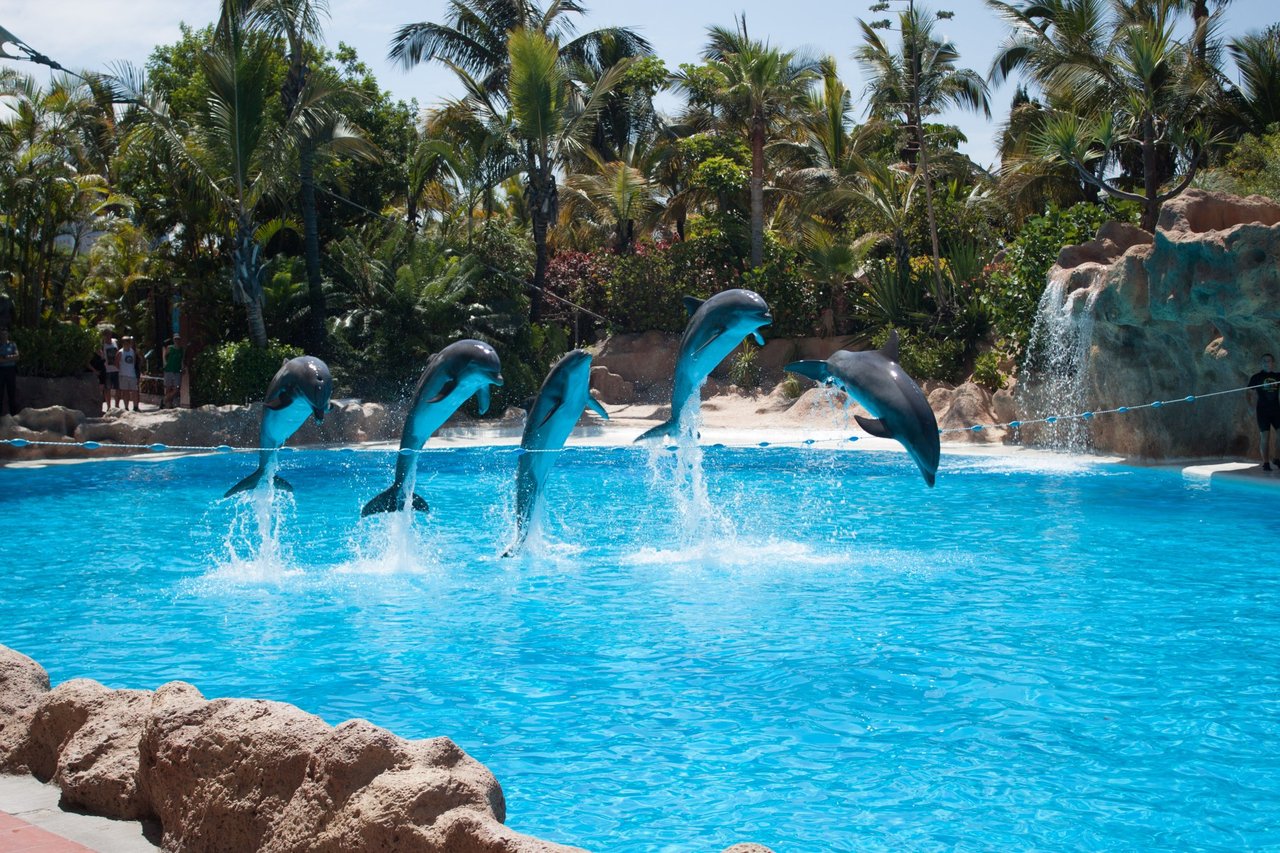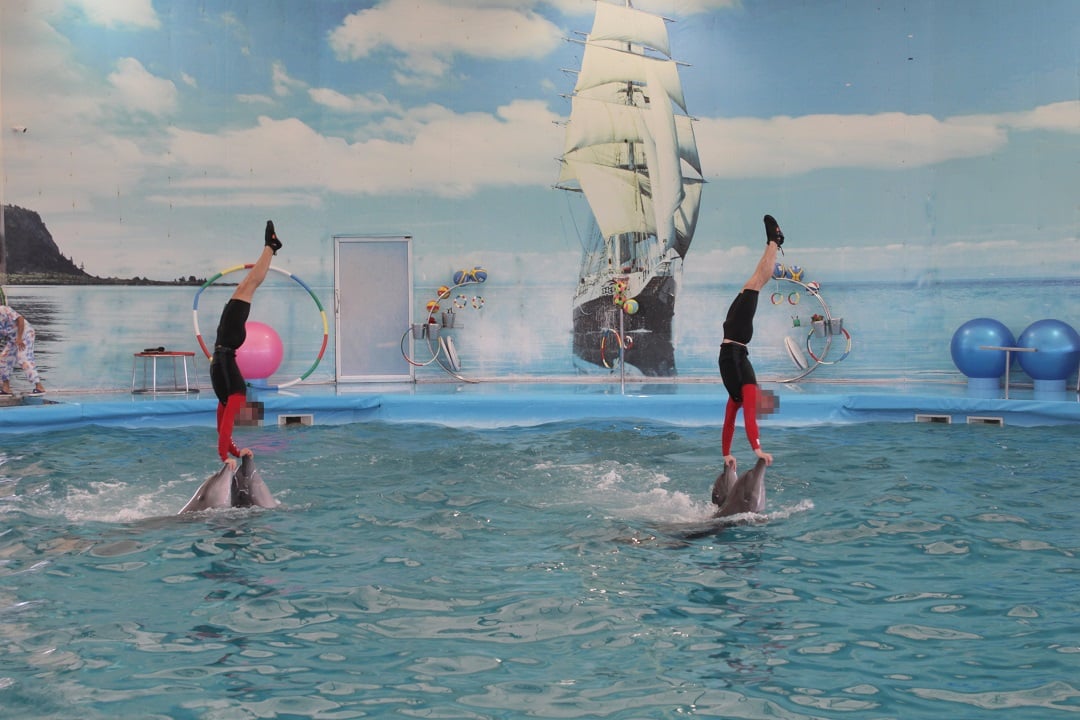
Marine mammal captivity
Marine mammals, including dolphins, whales and sea lions are perfectly adapted to thrive in the vast ocean, not in the confined spaces of concrete tanks. Yet, many facilities continue to exploit these intelligent and social animals for public display and tourism.
In our report, 'The Case Against Marine Mammals in Captivity', we provide scientific evidence and ethical arguments to support the case that it is unacceptable to house marine mammals in captivity for the purpose of public display and tourist entertainment.

The cruelty of captivity
Inadequate space
- Wild cetaceans travel up to 160 kilometers a day, achieve speeds of 48 kilometers per hour, and dive hundreds of feet deep.
- Even in the largest facilities, captive tanks provide less than 0.0001% (one millionth) of their natural habitat range.
- One 2014 study found that a captive male orca spent nearly 70% of his time virtually motionless.
Health problems
- Captive marine mammals suffer from a huge range of health problems, including extreme stress, neurotic behaviours, and abnormal levels of aggression.
- Bottlenose dolphins are six times more likely to die immediately after capture from the wild and transfer between facilities.
- Annual mortality rates for captive orcas have improved over the years, but they still don’t match healthy populations in the wild.
Supressed natural behaviours
- The inadequate space provided in captivity suppresses natural behaviours such as consistent cardiovascular exercise, foraging for prey, and social interaction with large groups of closely bonded pod mates.
Psychological and physical suffering
Keeping marine mammals captive, whether taken from the wild or bred in captivity, causes immense physical and psychological suffering – from capture, to transport to a lifelong existence in small barren tanks.
Stress-related conditions such as ulcers, stereotypical behaviours including pacing and self-mutilation and abnormal aggression frequently develop in predators denied the opportunity to forage.
Diseases afflict captive marine mammals more frequently or more intensely than their free-ranging counterparts; captive cetaceans have been known to suffer from infections not known to afflict wild dolphins.
Many facilities offer direct interaction with marine mammals through feeding sessions or attractions such as swimming with dolphins. These interactions endanger both the animals and the human participants by increasing the chances of disease transmission and physical injuries, as well as stress for the animals.

Profit over welfare
Marine mammal exhibits prioritize the needs of the visiting public and economic factors over the needs of the animals. Enclosures are designed to make the animals readily visible, not necessarily comfortable, and efficiency of maintenance dictates slick surfaces as opposed to naturalistic textures and substrates.
Some facilities display marine mammals in sea pens rather than traditional aquariums. While sea pens simulate more natural conditions, they are subject to alternative problems such as noise pollution from boat traffic and coastal development, and physical pollution from land-based features such as runoff from roads and sewage outfall.
False education and conservation claims
The public display industry often justifies marine mammal exhibits by claiming that they serve a valuable education function and that people learn important information from seeing live animals.
However, a study found that fewer than half of reviewed dolphinaria provided any information on conservation or provided educational materials for children or teachers.
It can also be argued that viewing captive animals gives the public a false picture of the animals’ natural lives. For example, many actions performed by dolphins in shows that are portrayed as “play” or “fun” are actually displays that in free-ranging animals would usually be considered aggressive or a sign of disturbance.
Similarly, it is often misleadingly claimed that marine mammal exhibits serve a valuable conservation function. In reality, fewer than 5 to 10 percent of zoos, dolphinaria, and aquaria are involved in substantial conservation programs and the majority of marine mammals currently being bred in captivity are neither threatened nor endangered.
In fact, most captive-breeding programs simply ensure a supply of animals for display or trade, creating in many cases creating larger populations of animals with questionable genetic backgrounds. It would appear that for dolphinaria and aquaria to state that they are actively involved in conservation is little more than a marketing tool or a way to justify imports of animals – particularly because the overwhelming majority of marine mammal species currently being bred in captivity is neither threatened nor endangered, including bottlenose dolphins.
Ethical considerations of marine mammal captivity
Keeping sentient marine mammals in captivity raises serious moral concerns. Confined for entertainment, they suffer immense physical and mental harm, challenging the justification of such practices.
Watch: Interview with Dr Naomi Rose - Lead author of The Case Against Marine Mammals in Captivity and AWI’s marine mammal scientist.
Solutions for marine mammals: humane alternatives
Sanctuaries for marine mammals
One potential solution is creating sanctuaries where marine mammals can live naturally in environments that more closely resemble their wild habitats. Sanctuaries offer animals a chance for rehabilitation, rest and freedom while allowing people to observe them responsibly.
Whale Heritage Sites
Whale Heritage Sites are accredited venues that promote sustainable and responsible whale and dolphin watching. These sites respect animal welfare while offering an educational experience that connects visitors with marine wildlife in the wild, not in captivity.
Animal-friendly tourism
When planning a trip, consider opting for animal-friendly tourism. Look for wildlife encounters that promote conservation, animal welfare and respect for the creatures in their natural habitats.